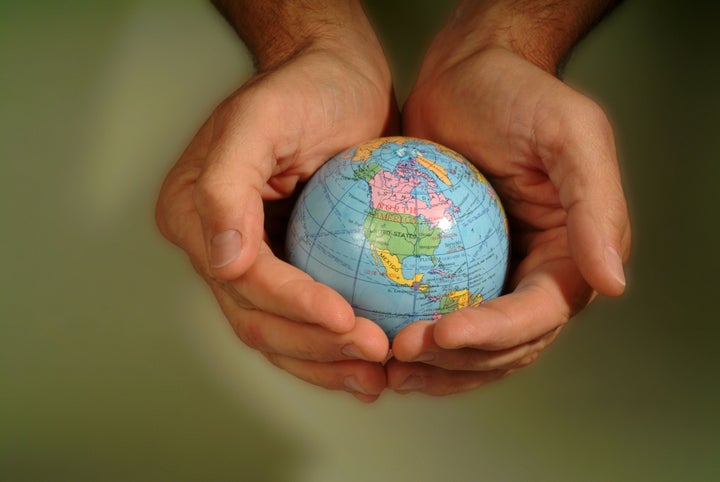
New York native, Elizabeth Suda, got the "travel bug" in college while studying abroad at Oxford University. She seized every opportunity to travel through Europe while abroad. After graduating from Williams College, she landed a job in the fashion industry at Coach.
"Landing back in [New York City] was great if I wasn't going to travel," Suda remembers.
While working in the Merchandising Department at Coach, she learned the various aspects of the fashion industry from designers, to product developers, to retail buyers. She noticed that many of their products tags had the same inscription: "MADE IN INDIA" or "MADE IN CHINA." Curious by nature, she wanted to delve deeper to discover where the products she worked with daily originated.
"Occasionally, I'd see Mandarin scrawled in the tag margins, which got me thinking about where our products come from, how they are made, and by who," says Suda. "I started thinking about sustainability, the environment, and developed a hunch that design in combination with a consumer market could quite possibly solve problems."
Soon after, Suda left her job at Coach and life in New York City. She traveled to Laos, a small country in Southeast Asia that borders Vietnam. The country's total population is 6 million, 2 million less than her New York City home. She took a job at a Swiss non-governmental organization, Helvetas, researching textiles as part of their RISE (Rural Income through Sustainable Energy) project.
While there, she learned more about the covert war the United States waged against the small impoverished nation. In an effort to stave off a Lao rebellion that could further the spread of communism, the U.S. dropped over 2 million tons of explosives over Laos in 580,000 bombing missions. So much so, the country has become the most heavily bombed country per capita in the world.
"Between 1964 and 1973, the equivalent of one B-52 bomb load showered upon Laos every eight minutes, 24 hours a day, for nine years," reveals Suda. "It was a secret to nearly anyone, except the lives of those it changed forever."
At least 270 million cluster bombs were dropped, but 75 million failed to detonate. Unexploded ordnances (UXO) continue to pepper the countryside and remain the legacy of this secret war, which US officials denied even existing at the time. Bomb clearance expert James McFarland says UXO negatively impacts Laos in so many ways: "It will not allowed poverty to be reduced," he says. "It restricts what people in the country can eat... there is the constant threat of maiming. If the father loses a leg farming, income and food generation is gone for that family."
At the current rate of bomb removal, it would take nearly 800 years to clear Laos of all of its UXOs. "In 2010, the United States between 5-7 million US dollars clearing UXO in Laos, " says Suda. "That same year, it announced its plan to spend between 110 and 145 million on a new embassy in Vientiane, the capital of Laos."
Shocked to learn about this covert war's devastating impacts, Suda felt motivated to educate those back home about the injustice, but was unaware of how to spread the message. She noticed how many local artisans had perfected the practice of melting bomb metal and shrapnel remains in their homemade earthen kilns and recasting them into spoons.
"Watching the artisans transform deadly pieces of history into spoons, something useful, I felt this story had to be told," remembers Suda. "In an instant, I thought of making a bracelet and it was just one of those moments."
Suda created the Project peaceBOMB, a social enterprise that designs and markets jewelry made partially or entirely out of war scrap metals. Lao villagers produce all of the jewelry; they reshape the melted artillery into bracelets, necklaces and spoon novelties. Project peaceBomb simultaneously offers solutions to issues that have longed stifled the nation, such as diversifying local income and growing capital, funding bomb clearance and raising awareness to ban cluster munitions, which were used over Loas during the Vietnam War.
"They were already doing this: this was their own innovation through their own initiative," says Suda. "It's been a real positive experience and we are talking about other products that could work for both the local and international markets.
Currently with the help of Helvetas (her former NGO employer), Project peaceBOMB is training their artisan partners to expand beyond the bracelets into new designs. The revenue generated from their has been life changing for the villagers because it is four-times greater than what they could sell their work for locally. The revenue allows families to pay for basic needs like soap, medicine, and school uniforms to more long-term investments like purchasing a cow.
"We strive to design fashion that people want to wear, not just that they wear to help," says Suda. "It's about creating well-designed products with added social values."
In 2011, Project peaceBOMB sold enough jewelry to clear the equivalent of 10,000 square meters of bomb-littered land. In addition to funding cleanup, the sale of the peaceBOMB jewelry provides additional donations that go into a central development fund. With the help of Helvetas, the community manages the fund. So far, villagers have used the funds to provide electricity to communal areas and provide micro-loans for small businesses to further economic growth.
"I love that they buy back the bombs," sums up McFarland. "It gives people the chance to make money, feed their family, get an education, further themselves in some capacity, and it all comes from something that caused the problem. That is the key thing."
You can read more DoGooder Spotlights and fundraise for your school or nonprofit at TheDoGooder.com.